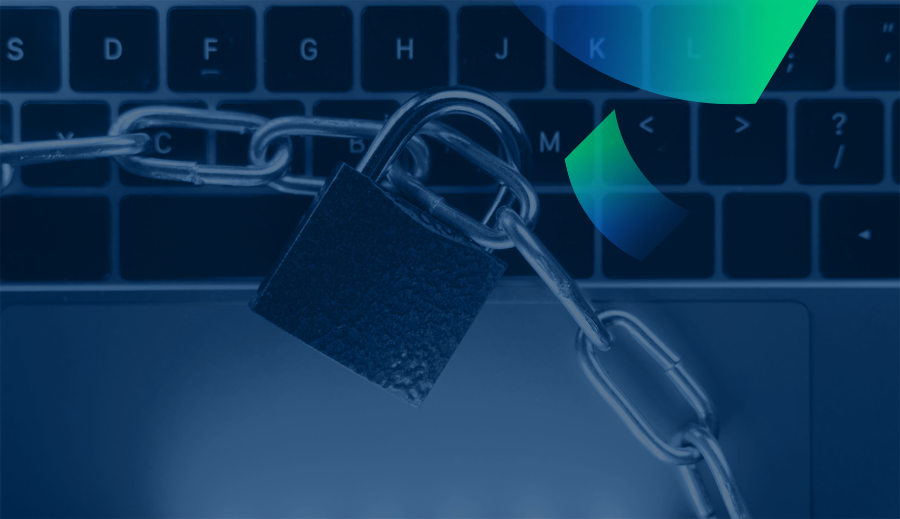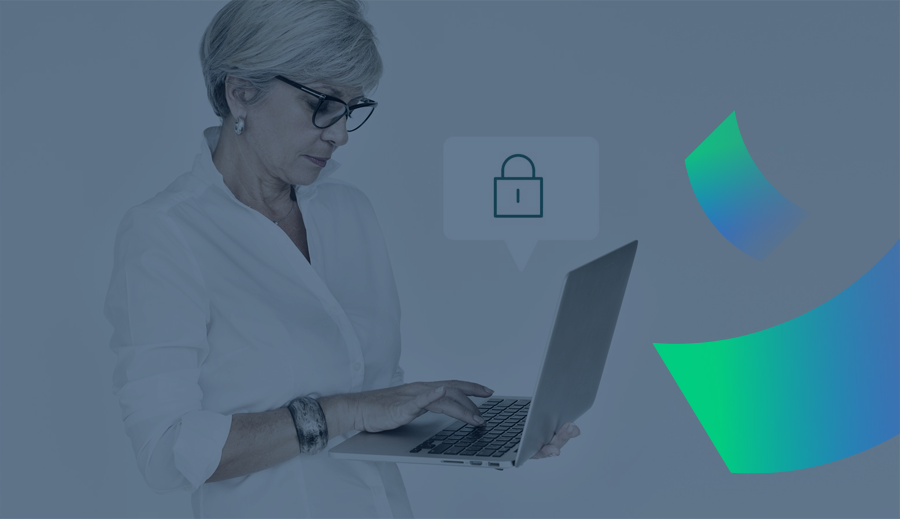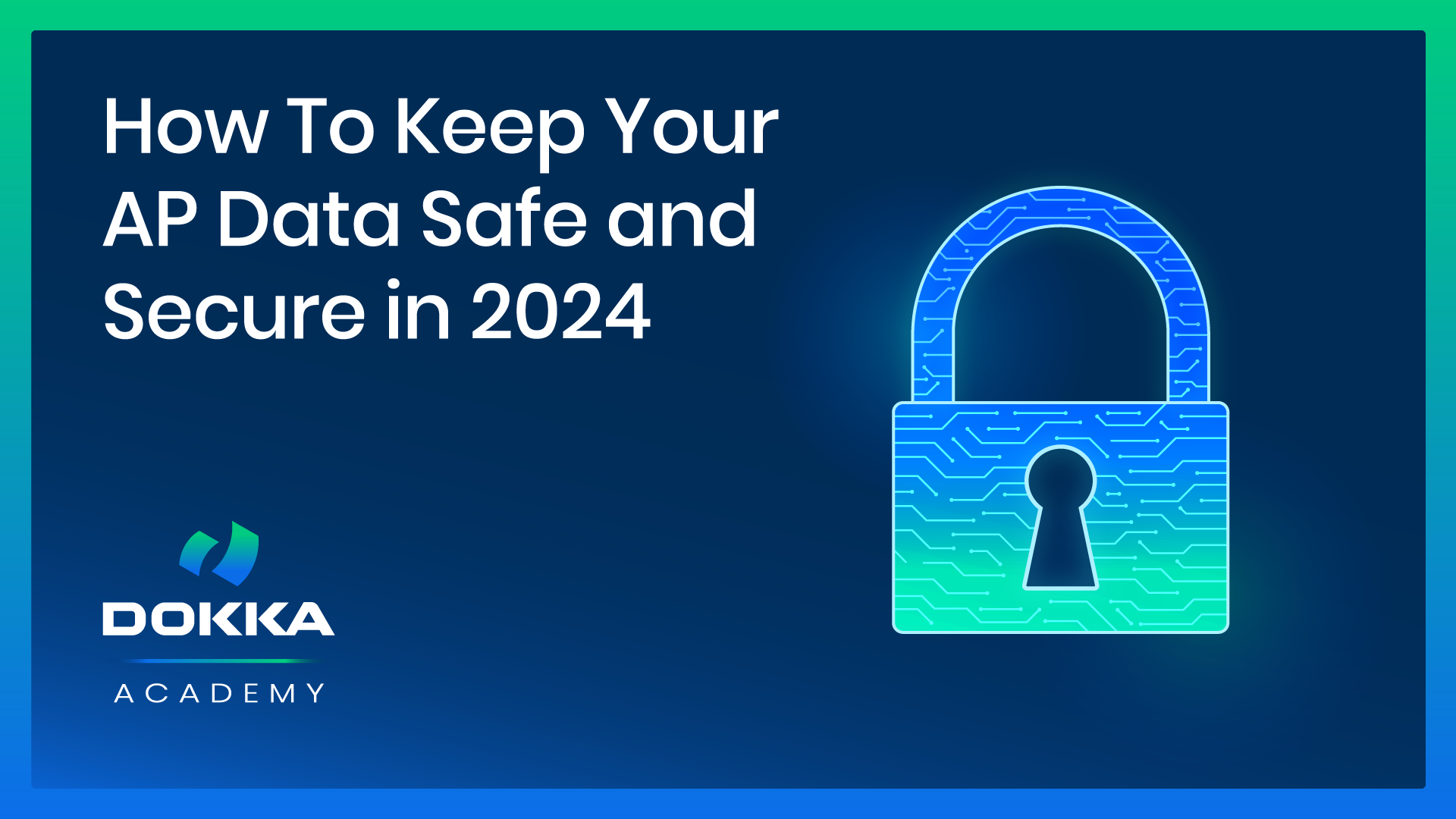What’s the first thing that comes to mind when you start thinking about buying new finance software?
Is it cost reduction, paperless accounting, elimination of manual work, or maybe faster invoice processing?
Yes, accounting automation offers many benefits, but it also comes with its fair share of challenges.
Why are we starting this topic? It’s because the latest 2024 Tech Trends in Finance survey, conducted by Gartner Digital Markets, identifies security concerns as a top challenge for finance software buyers in 2024. Therefore, data security remains a primary concern moving forward.
With an increased reliance on technology and the rise of cyber threats, taking necessary measures to keep your data safe and secure has become essential. This is especially crucial for accounts payable (AP) data, which contains sensitive financial information. The problem is twofold, involving external threats such as hacking and phishing attacks, as well as internal threats like human error and insider fraud. Any of these vulnerabilities can lead to significant financial losses, reputational damage, and legal ramifications.
Today, we’ll offer practical insights and guidelines on how to keep your AP data safe and secure in 2024.

What’s the Worst That Can Happen?
Before we dive into the protective measures for your AP data, it’s crucial to grasp the potential risks associated with using technology for accounting automation. These risks are not just theoretical but are increasingly manifesting in various forms, posing serious threats to data security:
1) Data Breaches
Data breaches occur when unauthorized entities gain access to sensitive data. Such breaches can be the result of sophisticated hacking techniques, exploiting weaknesses in your network security. The impact is not just immediate financial loss; it can lead to long-term reputational damage and erosion of customer trust. Moreover, the legal implications, including potential lawsuits and fines, add to the severity of a data breach.
2) Phishing Attacks
Cybercriminals use deceptive emails or websites that mimic legitimate sources to trick users into revealing confidential information. These attacks are becoming increasingly sophisticated, using social engineering to manipulate users. The fallout from a successful phishing attack can range from financial theft to the compromise of entire IT systems.
3) Malware
This broad category includes viruses, worms, trojans, ransomware, and other malicious software. Malware can enter your systems through various channels, like email attachments or compromised websites, and can lead to data theft, corruption of files, and even complete system shutdowns. Ransomware, a growing threat, can lock you out of your own data, with criminals demanding payment for release.
4) Insider Threats
Insider threats emerge from within your organization and can be more insidious. They might come from disgruntled employees, negligent staff, or even compromised accounts. Such threats can result in intentional data leaks or unintentional data exposure due to carelessness.
5) Human Error
Often the most common and overlooked risk, human error includes simple mistakes like misconfigured settings, weak passwords, or mishandling of data. A single error can expose sensitive information, making it accessible to unauthorized parties. For example, accidentally sending an email with sensitive information to the wrong recipient.
6) Unsecured Networks and Systems
Utilizing unsecured networks, especially public Wi-Fi, for transmitting sensitive AP data can make your information vulnerable to interception. Similarly, outdated systems with unpatched vulnerabilities can be easy targets for attackers.
7) Supply Chain Attacks
Attackers sometimes target less secure elements in the supply chain to access your network. This includes third-party vendors or software providers. Compromising one of these can provide a backdoor into your systems.
8) Advanced Persistent Threats (APTs)
These are prolonged and targeted cyberattacks where an unauthorized user gains access to a network and remains undetected for a long period. The objective is often to steal data over time, making APTs particularly dangerous.
Addressing these challenges requires a comprehensive and proactive approach. The solution lies in embracing advanced security measures, implementing cutting-edge technologies, and fostering a culture of security awareness within organizations. By combining robust authentication processes, encryption technologies, regular systems updates, and staff training, you can create a formidable defense against potential breaches. Additionally, the adoption of role-based access control, regular audits, and compliance checks further fortify the security framework.

The Growing Importance of AP Data Security
In addition to the risks and consequences mentioned above, there are several other compelling reasons why AP data security should be a top priority for your organization:
- Compliance Requirements: Many industries are subject to regulations mandating the protection of sensitive financial information. Notable among these are The Sarbanes-Oxley Act (SOX), which imposes strict auditing and financial regulations to protect investors from corporate fraud; the Payment Card Industry Data Security Standard (PCI DSS), setting standards for protecting cardholder data; and the General Data Protection Regulation (GDPR) in the European Union, governing data protection and privacy for not just financial data, but all personal data.
- Protecting Business Continuity: The disruption caused by a data breach or loss of sensitive AP data can have far-reaching effects on your organization’s operations. This disruption can result in direct financial losses, derailment of business processes, and damage to relationships with clients and partners. Ensuring the security and availability of AP data is crucial for the uninterrupted functioning of your business.
- Safeguarding Intellectual Property: AP data often encompasses more than just transactional information; it can also contain details about business dealings, contracts, and negotiations that constitute your organization’s intellectual property. Securing this information is vital to prevent it from falling into competitors’ hands, which could erode your market position and competitive advantage.
- Maintaining Customer Trust: Customer confidence is a cornerstone of any business. Customers entrust their financial information to organizations expecting stringent security measures. Any breach or compromise can significantly erode this trust, potentially leading to loss of customers, brand damage, and even legal repercussions.
- Enhancing Corporate Responsibility and Ethics: Adopting robust AP data security measures reflects a commitment to ethical business practices. It demonstrates to stakeholders, including investors, employees, and the public, that your organization values and safeguards sensitive information responsibly.
- Mitigating Risk of Financial Fraud: Securing AP data is also essential in combating financial fraud. This includes preventing unauthorized transactions, embezzlement, or manipulation of financial records, which can have severe financial and legal implications.
AP data security is not just a technical requirement; it’s a comprehensive approach that impacts legal compliance, business continuity, intellectual property, customer trust, corporate ethics, and financial integrity. By prioritizing and investing in effective data security measures, your organization can mitigate risks, comply with regulations, and maintain a strong and trustworthy relationship with all stakeholders.

Best Practices To Keep Your AP Data Safe
Implement Robust Authentication Measures
The first line of defense in AP security is robust authentication. This includes multi-factor authentication (MFA), biometric verification, and strong password policies. MFA, in particular, adds an extra layer of security by requiring users to provide two or more verification factors to gain access to AP systems. Regularly updating authentication protocols and conducting periodic security reviews ensure that authentication measures remain effective against evolving threats.
Utilize Advanced Encryption Technologies
Encrypting sensitive AP data both in transit and at rest is non-negotiable. Employ advanced encryption standards (AES) and secure socket layer (SSL) encryption to protect data from unauthorized access. Consider using end-to-end encryption methods, where data is encrypted from its point of origin until its intended destination, thereby reducing the risk of interception or tampering.
Regularly Update and Patch Systems
Cyber threats evolve rapidly, making it essential to regularly update and patch your AP software and systems. This includes not only the AP software but also the underlying operating systems and network components. Scheduled maintenance and updates ensure that security vulnerabilities are promptly addressed.
Educate and Train Staff
Human error remains one of the biggest security risks. Regular training and awareness programs for your staff about the latest phishing scams, social engineering tactics, and safe data handling practices can significantly reduce risks. Creating a culture of security awareness and encouraging employees to report suspicious activities can also enhance your organization’s overall security posture.
Implement Role-Based Access Control (RBAC)
RBAC ensures that employees have access only to the AP data they need for their specific roles. This minimizes the risk of internal data breaches and misuse of sensitive information. Regularly reviewing and updating access privileges as roles change or evolve is also crucial.
Regular Audits and Compliance Checks
Conducting regular audits of your AP processes and ensuring compliance with regulations like GDPR, HIPAA, or SOX, depending on your location and industry, are crucial. These audits help in identifying potential vulnerabilities and ensuring adherence to best practices. External audits can also provide an unbiased view of your security posture.
Use Secure AP Automation Solutions
Leveraging AP automation solutions not only streamlines the AP process but also adds layers of security. Choose solutions that offer secure data handling, automated fraud detection, and compliance management. Ensuring that your AP automation software is from a reputable provider and regularly updated is also important.
Adherence to ISO Standards
Complying with ISO standards, especially ISO/IEC 27001, is vital for establishing, maintaining, and continually improving an information security management system (ISMS). This standard provides a framework for data security best practices and helps in managing sensitive company information securely.
Develop a Comprehensive Incident Response Plan
Despite all precautions, breaches can occur. Having a well-structured incident response plan ensures that you can quickly and effectively address any security incidents, minimizing potential damage. This plan should include clear procedures for containment, eradication, and recovery, as well as communication strategies for stakeholders.
Backup and Disaster Recovery Plans
Regular backups of AP data and having a robust disaster recovery plan are essential to protect against data loss due to system failures, natural disasters, or cyber-attacks. These plans should be tested regularly to ensure they are effective in a real-world scenario.
Monitor and Analyze AP Data
Continuous monitoring and analysis of AP data for unusual activities or transactions can help in early detection of potential security threats. Implementing advanced analytics and anomaly detection tools can provide deeper insights into data patterns and potential vulnerabilities.
In conclusion, given the constantly evolving landscape of cyber threats, it is essential for businesses to prioritize AP data security. By implementing robust password policies, utilizing encryption and two-factor authentication, regularly backing up data, and educating employees about cybersecurity, businesses can maintain the security of their AP data in 2024 and beyond. Staying abreast of industry regulations and employing cloud-based solutions are also key to mitigating risks and maintaining trust with suppliers and vendors. Remember, data security is an ongoing process that requires constant vigilance to protect sensitive information. Stay vigilant and proactive in safeguarding your AP data.
How DOKKA Can Help You Protect Your Financial Data
DOKKA can help protect your financial data by offering a suite of features designed for accounts payable process automation. Its AI-driven technology facilitates efficient and accurate data extraction from invoices. The platform supports automated approval workflows and integrates seamlessly with various ERP systems. Additionally, DOKKA’s advanced document management and 3-way matching capabilities ensure both data accuracy and enhanced security, crucial for safeguarding sensitive financial information. This combination of automation, integration, and data protection makes DOKKA a valuable tool for any organization looking to secure its financial data.








